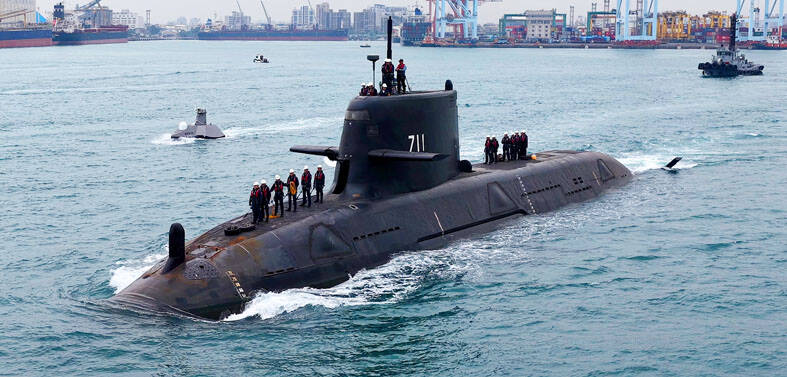Three Black Hawk helicopters from the US were delivered to Taiwan yesterday and are scheduled to be put into service as rescue aircraft in March, the Ministry of the Interior said.
The UH-60M helicopters arrived at Kaohsiung Port as part of a US$3.1 billion arms deal that was approved by the US in early 2010.
Equipped with forward looking infrared night vision enhancement systems, the three Black Hawks are to be deployed in the National Airborne Service Corps (NASC), particularly for nighttime search-and-rescue missions at sea, the ministry said.
Yesterday’s delivery was the third batch in a fleet of 60 UH-60M Black Hawks in the arms package, which also includes two Osprey Class mine-hunting ships, 12 ATM-84L and RTM-84L Harpoon Block II Telemetry missiles, 114 Patriot Advanced Capability missiles, US$2.82 billion worth of technical support, 35 multifunctional information distribution systems (MIDS) low volume terminals and 25 MIDS on ships terminals.
Of the 60 Black Hawks in the package, 15 are to be given to the NASC to boost its search and rescue fleet of AS-365N Dauphin helicopters, while the others would go to the Army Aviation Special Forces in Guiren, according to the ministry.
A Black Hawk helicopter is capable of carrying 12 troops with equipment, airlifting a 4.1 tonne external payload and taking off with a maximum weight of 10.66 tonnes.

NUMBERS IMBALANCE: More than 4 million Taiwanese have visited China this year, while only about half a million Chinese have visited here Beijing has yet to respond to Taiwan’s requests for negotiation over matters related to the recovery of cross-strait tourism, the Tourism Administration said yesterday. Taiwan’s tourism authority issued the statement after Chinese-language daily the China Times reported yesterday that the government’s policy of banning group tours to China does not stop Taiwanese from visiting the country. As of October, more than 4.2 million had traveled to China this year, exceeding last year. Beijing estimated the number of Taiwanese tourists in China could reach 4.5 million this year. By contrast, only 500,000 Chinese tourists are expected in Taiwan, the report said. The report

SHIPS, TRAINS AND AUTOMOBILES: The ministry has announced changes to varied transportation industries taking effect soon, with a number of effects for passengers Beginning next month, the post office is canceling signature upon delivery and written inquiry services for international registered small packets in accordance with the new policy of the Universal Postal Union, the Ministry of Transportation and Communications said yesterday. The new policy does not apply to packets that are to be delivered to China, the ministry said. Senders of international registered small packets would receive a NT$10 rebate on postage if the packets are sent from Jan. 1 to March 31, it added. The ministry said that three other policies are also scheduled to take effect next month. International cruise ship operators

Temperatures are forecast to drop steadily as a continental cold air mass moves across Taiwan, with some areas also likely to see heavy rainfall, the Central Weather Administration (CWA) said. From today through early tomorrow, a cold air mass would keep temperatures low across central and northern Taiwan, and the eastern half of Taiwan proper, with isolated brief showers forecast along Keelung’s north coast, Taipei and New Taipei City’s mountainous areas and eastern Taiwan, it said. Lows of 11°C to 15°C are forecast in central and northern Taiwan, Yilan County, and the outlying Kinmen and Lienchiang (Matsu) counties, and 14°C to 17°C

STEERING FAILURE: The first boat of its class is experiencing teething issues as it readies for acceptance by the navy, according to a recent story about rudder failure The Hai Kun (海鯤), the nation’s first locally built submarine, allegedly suffered a total failure of stern hydraulic systems during the second round of sea acceptance trials on June 26, and sailors were forced to manually operate the X-rudder to turn the submarine and return to port, news Web site Mirror Daily reported yesterday. The report said that tugboats following the Hai Kun assisted the submarine in avoiding collisions with other ships due to the X-rudder malfunctioning. At the time of the report, the submarine had completed its trials and was scheduled to begin diving and surfacing tests in shallow areas. The X-rudder,